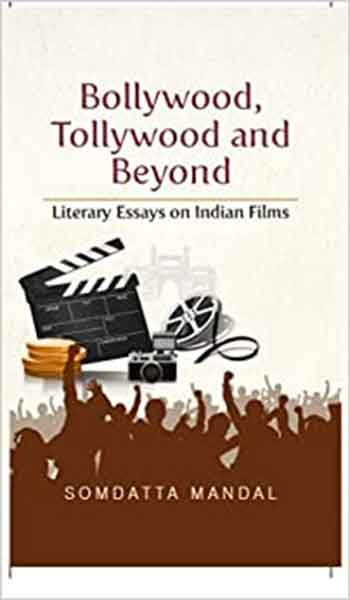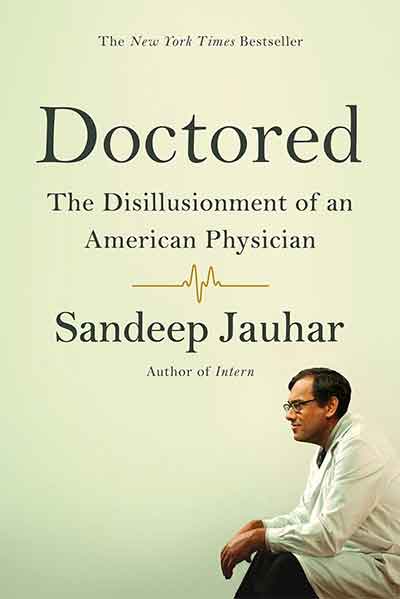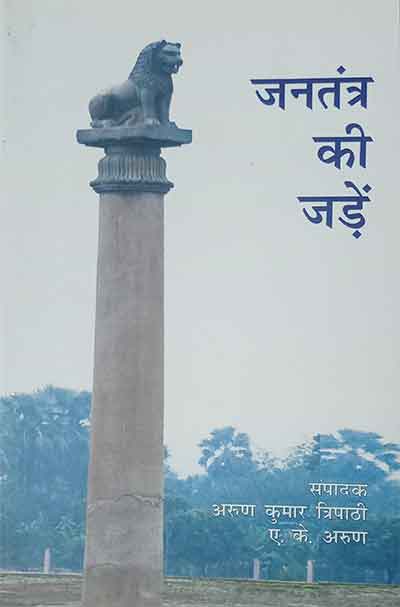BOLLYWOOD, TOLLYWOOD AND BEYOND – LITERARY ESSAYS ON INDIAN FILMS – By Somdatta Mandal, Pencraft International, New Delhi, 2021. Pages 344, Price: Rs.1200
Somdatta Mandal recently retired from her position as Professor of English and Chairperson of the Department of English, Viswa Bharati, Santi Niketan where she was very active in organizing seminars, panel discussions and conferences on subjects linking literature to cinema. Her interest in cinema – Bollywood, Bengali and International, is no less than her involvement with literature. This book is a kind of culmination of these twin involvements she has been engaged in for a major part of her life. “Kind of culmination” because, knowing her deep interest in recording her thoughts, ideologies, opinions and comments on cinema, she must have already engaged herself in penning another book along similar lines.
The massive literature comprising this book is so voluminous (344 pages), both in terms of pages as well as in terms of depth of analysis, detailing of narration and clearly defining each concept for the understanding of the lay reader that this could have easily been shaped into three books instead of one.

After a concisely worded Foreword by noted film theorist, critic and scholar M.K. Raghavendra and a somewhat detailed introduction penned by the author herself, the main text of the book gets classified very sharply into three completely different segments – (a) Thematic Studies, (b) Eminent Personalities and Directors, and (c) Individual films.
Mandal keeps away from heavy academic theories drawn from film studies through a structural approach and takes on a more socio-historical approach to cinema – drawn from literature, cinema based on the Partition and its impact both in the Punjab and in Bengal and very significantly, on the representation of minority communities such as the Anglo-Indian and the Muslim in Indian cinema. Her smooth and fluent style makes this book a powerful frame of reference for students and scholars of film studies now and into the future.
A notable absence in her analysis of films which explore the ethnic lifestyles and characters among Muslims are the three films directed by Shyam Bengal where Muslims form a major slice of the narrative and the cinematographic space in his films such as Mammo, Sardari Begum and Zubeidaa which remain among the classics within the rich oeuvre of Benegal.
Mandal springs some very strong but pleasant surprises with films that have been seen perhaps by many but not much written about such as Deepa Mehta’s Earth 1947 based on Bapsi Sidhwa’s novel The Ice Candy Man, and a very detailed analysis of Eisha Marjara’s little known film Desperately Seeking Helen in the chapter Aping the Vamp & Identity Issues in the Diaspora which offers a deep insight into a film most of us have not even heard of much less watched. This marks a departure in the book where most films discussed, debated and analysed are known to most of us.
A very enlightening chapter unfolds the little-explored idea under the section Thematic Studies that is titled “May You Be the Mother of a Hundred Sons!” which analyses Barrenness vs. Motherhood in Bengali Cinema. This is perhaps an extension of the idea forwarded by Nabanita Bosuhak (Bosuhak, Nabanita, Rabindranath—Naari Samaj Arthaneeti (Kolkata: Pretonia Publishers and Distributors, 2012).who questions Tagore’s representation of so many marriages without children. Within the Tagore family, Debendranath Tagore’s son Jyotirindranath and grandson Balendranath (son of Birendranath) have no children. Three of Tagore’s children were infertile, and his only son Rathindranath remained childless. But Mandal goes much beyond Tagore’s barren women in literature and his own extended family. She goes on to explain the barren-ness in the women in films of Satyajit Ray (Monihara, Devi, Charulata and Ghare Baire) along with some women in Rituparna Ghosh’s films like Khela, Antarmahal, etc.
Was Tagore a Feminist? Re-evaluating Selected Fiction and their Film Adaptations (Eminent Personalities and Directors) where, under the sub-head, Women in Cinematic Representation, Mandal practically holds our hand and takes us on a walk through the cinematic adaptations of Tagore’s stories and novels and though these are topics explored and analysed to death, they do highlight Mandal’s personal interpretation of these women characters from Teen Kanya through Charulata to Ghare Baire.
The best takeaway from the entire book however, remains Mandal’s deep probing and analysis of the “Partition” films where she focusses on the Partition through four detailed chapters in the first section, named Thematic Studies besides Deepa Mehta’s Earth 1947 in the last section. This reviewer genuinely believes that these chapters could have justifiably been a part of a completely separate book as it covers an entire plethora of subjects such as history, politics, sociology, gender and film studies.
The photographic reproductions of stills from different films are no vivid at all as they are printed within the textual matter and not on separately printed and bound art paper which is a comedown considering that the price is pegged quite high at Rs.1200/copy.
So far as production values go, the cover in deep brown and black against an off-white background is stunning as it features a collage of things directly related to cinema such as a clapstick, film reels, a camera, stacked rolls of celluloid films and a silhouetted audience in front with hands raised either in applause or in anger – left to the reader to interpret or simply take it as face value. This is not Mandal’s first book on cinema. It is definitely not her last.
Thank you Somdatta Mandal for giving us such an enlightening book on cinema.
Shoma A. Chatterji is a freelance journalist, film scholar and author contributing to several digital and print media in India and beyond. She has authored 27 books and two more are in the pipeline. She has won the National Award for Best Writing on Cinema twice. She lives in Kolkata.
















































